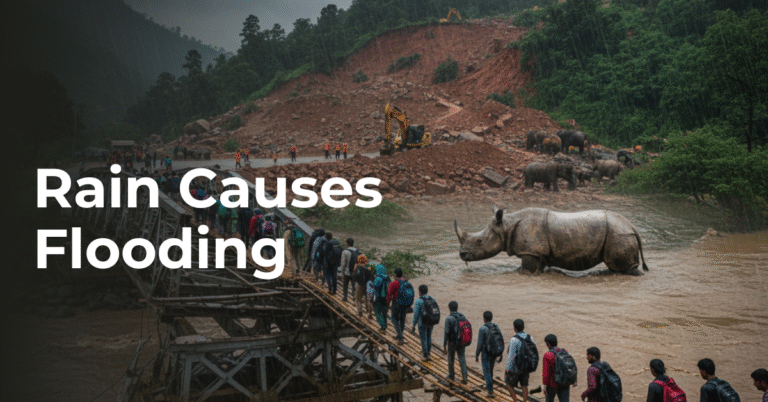
October 6, 2025 | North Bengal, India: A devastating natural calamity has struck the picturesque hills of Darjeeling and the plains of North Bengal, with continuous, extremely heavy rainfall over the weekend triggering massive landslides and severe Bengal Floods. The latest reports confirm over 20 people have died, with dozens still missing, marking one of the region’s worst disasters in a decade.
The tourist town of Mirik has been identified as the epicenter of the tragedy, recording the highest number of fatalities. The incessant downpour, with Darjeeling logging over 260mm of rain in 24 hours, has caused extensive damage to infrastructure, isolating key regions and leaving hundreds of tourists stranded.
Key Impacts and Crisis Details:
- Human Tragedy and Casualties: The confirmed death toll has crossed 20, with Mirik bearing the brunt of the disaster. Rescue and relief operations by the NDRF, Army, and local administration are being severely hampered by ongoing rainfall and slippery terrain.
- Infrastructure Collapse and Isolation: Crucial road links have been severed. The iron bridge over the Balasan river at Dudhia collapsed, snapping the direct road link between Siliguri and Mirik. Major arteries like Rohini Road and parts of NH10, the lifeline to Sikkim, remain closed due to mudslides, effectively leaving Sikkim cut off from the rest of the country.
- Stranded Tourists: The calamity struck during the peak post-Durga Puja tourist season, leading to hundreds of tourists stranded in hill resorts and wildlife sanctuaries like Jaldapara. Many are facing power outages and struggle to secure transportation out of the disaster zone.
- Wildlife Crisis: Rhinos Trapped by Gorumara-Jaldapara Floods: The floodwaters have surged into the plains, severely impacting wildlife in the national parks. Reports indicate that the rising waters in the Jaldapara and Gorumara National Parks have washed away and trapped rhinos, wild elephants, and other animals. Forest officials are engaged in a frantic effort to monitor and rescue the distressed wildlife.
- Bhutan Dam Alert: Compounding the crisis, Bhutan’s National Centre for Hydrology and Meteorology issued a flood warning to the West Bengal government, stating that the Tala Hydropower Dam had overflowed. This raises the risk of further North Bengal Floods in the downstream districts of Jalpaiguri and Cooch Behar.
- Official Response and Warnings: The India Meteorological Department (IMD) has issued a Red Alert for extremely heavy rainfall in sub-Himalayan West Bengal, warning of further landslides and road blockages. Chief Minister Mamata Banerjee has described the situation as “alarming” and is scheduled to visit the disaster-affected region today to assess the damage and coordinate relief efforts.
Authorities are urging both residents and tourists stranded in the region to prioritize safety, avoid non-essential travel, and follow advisories from the local administration. The scale of the Darjeeling Landslide and Bengal Floods necessitates a prolonged and concerted recovery effort to restore connectivity and provide relief to the thousands affected by this severe West Bengal Natural Calamity.




